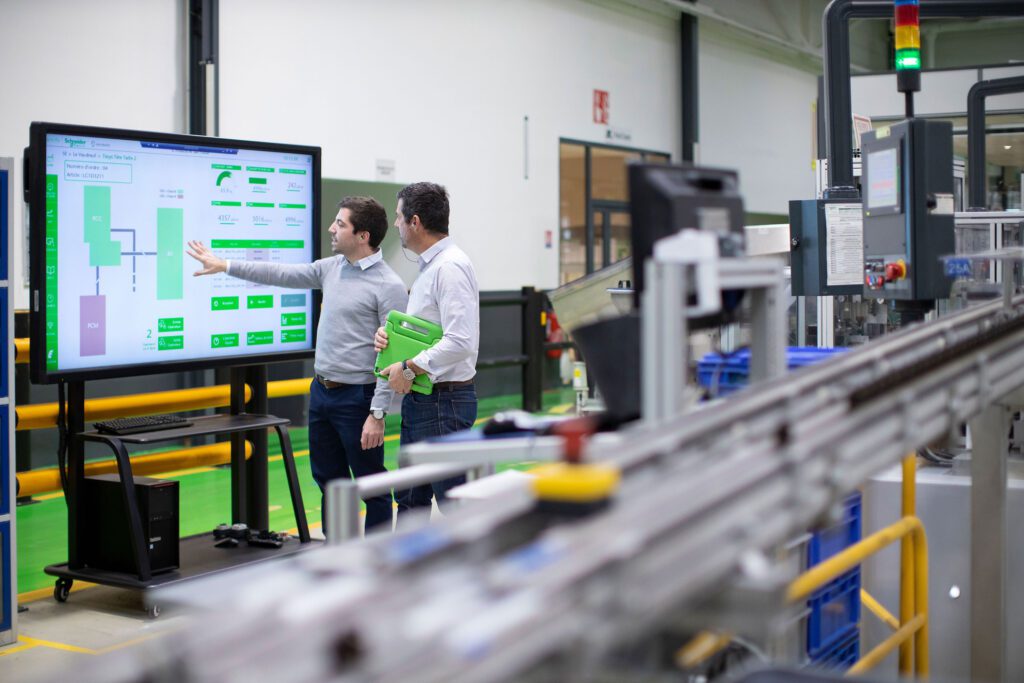
As climate change continues to impact society, hamper global trade, and garner intensified attention from stakeholders, the focus on environmental, social, and governance (ESG) issues in industries is at an all-time high. In 2020, the industrial sector contributed approximately one-third of global carbon dioxide. That’s why the sector’s engagement is vital to meeting climate change goals and moving society toward a more sustainable future.
The sustainability challenges extend well beyond the sector’s substantial carbon footprint, with concerns around raw material depletion, harmful emissions (e.g., nitrous oxide [N2O]), pollution, and water consumption standing out as areas that will have a material impact on business operations. As these sustainability topics continue to be at the forefront of conversations, manufacturing end users realize that these issues impact their total cost of ownership (TCO) and have begun to develop, deploy and invest in sustainability programs.
Sustainability initiatives from manufacturing companies
Sustainable manufacturing companies embrace a range of strategies to reduce their environmental footprint. They include adopting energy efficient practices, integrating renewable energy sources, and effective waste management.
How can manufacturing companies meet both sustainability and profitability goals?
Investments in sustainability vary significantly by industry sector, with some sectors realizing direct financial benefits and a clear return on investment while others struggle to justify their investments. A recent survey and report by Omdia, a leading independent analyst and consultancy firm, identified that two out of five respondents believe that corporate responsibility was the primary investment motivator for their sustainability initiatives. Additionally, 49% of the manufacturing respondents expected improved performance and cost savings from deploying sustainability programs.
Inefficiency is a significant contributor to manufacturing companies’ environmental impact. Sustainability programs have enabled a renewed focus on more effective product (or plant) design and prototyping, operational efficiency, and maintenance. By deploying strategic technology solutions that improve visibility and optimize processes, cost savings are achieved, resulting in sustainability and profitability goals being met simultaneously.
When asked to rank the top factors influencing their organizations’ decision to invest in operational sustainability initiatives, 57% ranked reducing energy consumption as a major objective. Energy costs are critical in manufacturing companies’ TCO, especially in energy-intensive industries such as chemicals, refining, pulp, and paper.
The respondents highlighted three prominent topics as key influencers:
- Recycling
- Waste management
- Renewable energy integration
1. Recycling – Expanding product lifespans while reducing costs
For some industry sectors, optimizing material usage is essential. If a company can recycle, remanufacture, or upcycle a component to expand a product’s lifespan, it should explore the various options to do so. Only 9% of plastic is recycled, so some chemical companies have partnered with (or acquired) plastic recycling companies to reduce costs, address supply chain uncertainties, and adhere to environmental goals by closing the loop on particular product components.
2. Circular Economy – One organization’s waste is another’s resource
Designing products with circularity in mind is being adopted by various industrial sectors. For example, all-in-one printers can now be remanufactured seven or eight times before they need to be replaced. This has inherent supply chain management benefits, adds value to an organization’s brand, and enhances customer relationships. Agriculture uses waste products from the coffee industry as fertilizer. It has been shown that one industry’s waste can even be sold as another industry’s resource, and usually at a price that benefits both. Fewer than a fifth of the companies surveyed have implemented circularity-focused solutions; however, almost three-quarters of these companies recognize the value.
3. Renewables – Cost parity requires inclusion on sustainability roadmaps
Integrating renewable energy sources like solar and wind into industrial operations is also top of mind for manufacturing companies. There has been substantial progress with CAPEX and OPEX costs, and the International Energy Agency (IEA) predicts renewables will have a cost advantage over traditional energy sources by 2025. Furthermore, the majority of the top 50 global manufacturing companies have made pledges to move to 100% use of renewable energy sources, and the integration of renewables, to some extent, will likely be on the sustainability roadmap for many other industry organizations.
Companies require technology solutions for their specific industries to help them gather, optimize, and act on data to make many of these sustainability initiatives successful. Additionally, improved sensors and visualization software are needed to accurately report progress toward improving their environmental footprint.
To learn more about the solutions available to help deploy your organization’s sustainability programs and the current state of industrial sustainability, please download the latest research report by Omdia – Industrial Sustainability: Moving Sustainability Forward in Manufacturing.



